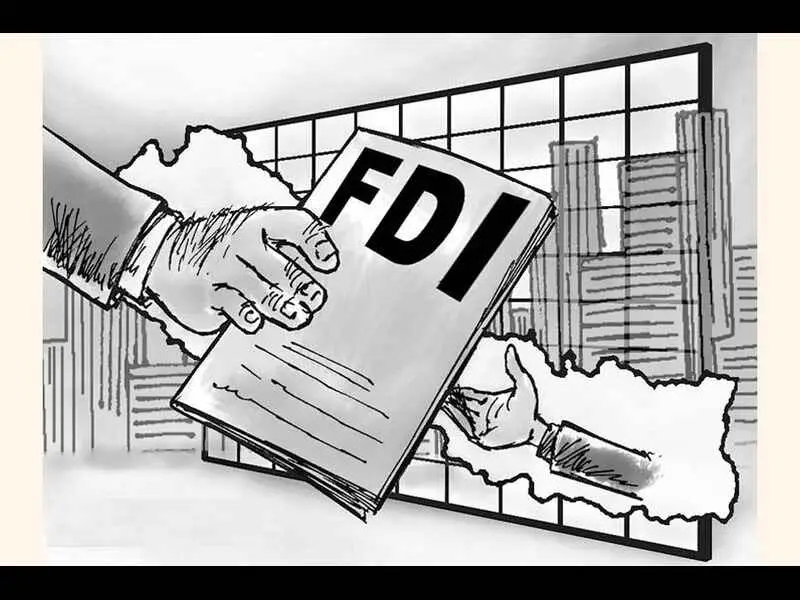India’s outward foreign direct investment (FDI) commitments increased by 25.7% year-on-year to $2.09 billion in January 2024, according to the latest data from the Reserve Bank of India (RBI). This was a decline from $2.5 billion in December 2023, but still higher than $1.66 billion in January 2023.
Equity commitments lead the growth
The growth in outward FDI was driven by equity commitments, which rose to $760.9 million in January 2024 from $597.4 million in January 2023. However, they were lower than $834.7 million in December 2023.
Equity commitments are the investments made by Indian companies in their overseas subsidiaries or joint ventures. They reflect the confidence and optimism of Indian businesses in the global market and their ability to compete with foreign players.
Some of the major equity investments made by Indian companies in January 2024 include:
- Tata Steel’s acquisition of a 51% stake in Thailand’s Siam Steel for $200 million.
- Reliance Industries’ purchase of a 40% stake in UK-based renewable energy company Lightsource BP for $150 million.
- Infosys’ expansion of its digital services portfolio in Europe by acquiring a 75% stake in Germany-based Blue Acorn iCi for $125 million.
Loans and guarantees also increase
Loans and guarantees are the other components of outward FDI, which represent the debt and contingent liabilities of Indian companies to their overseas units.
Loans increased to $306.2 million in January 2024 from $215.6 million in January 2023, but declined from $687.9 million in December 2023.
Loans are the funds provided by Indian companies to their overseas affiliates for various purposes, such as working capital, capital expenditure, or acquisitions.
Some of the major loan transactions made by Indian companies in January 2024 include:
- Adani Group’s provision of a $100 million loan to its Australian coal mining subsidiary Adani Mining Pty Ltd.
- Mahindra & Mahindra’s extension of a $50 million loan to its US-based electric vehicle subsidiary Mahindra Electric Mobility Inc.
- Larsen & Toubro’s grant of a $40 million loan to its UAE-based engineering subsidiary L&T Hydrocarbon Engineering Ltd.
Guarantees rose to $1.02 billion in January 2024 from $854.1 million in January 2023, and also increased marginally from $988.4 million in December 2023.
Guarantees are the obligations undertaken by Indian companies to secure the debt or performance of their overseas affiliates.
Some of the major guarantee transactions made by Indian companies in January 2024 include:
- State Bank of India’s issuance of a $300 million guarantee to its UK-based banking subsidiary SBI UK Ltd.
- Tata Motors’ provision of a $200 million guarantee to its UK-based automotive subsidiary Jaguar Land Rover Plc.
- Hindalco Industries’ offer of a $150 million guarantee to its US-based aluminium subsidiary Novelis Inc.
Reasons for rising outward FDI
The reasons for the rising outward FDI from India include:
- The desire of Indian companies to expand their global presence and access new markets and technologies. India’s outward FDI is mainly concentrated in sectors such as manufacturing, services, information technology, and pharmaceuticals, which have high growth potential and innovation opportunities.
- The availability of low-cost financing options and incentives from host countries. Many countries offer attractive tax breaks, subsidies, grants, and other benefits to foreign investors, especially in sectors such as renewable energy, infrastructure, and digital economy.
- The diversification of risks and returns across different geographies and sectors. By investing abroad, Indian companies can reduce their exposure to domestic uncertainties and volatility, and also benefit from higher returns and profitability in foreign markets.
- The impact of the production-linked incentive (PLI) schemes launched by the Indian government to boost domestic manufacturing and exports. The PLI schemes provide incentives to Indian manufacturers for increasing their production and exports in sectors such as electronics, automobiles, pharmaceuticals, textiles, and food processing. This encourages Indian companies to invest more in their overseas units to leverage their global value chains and market access.
Outlook for outward FDI
The outlook for outward FDI from India is positive, as India remains one of the fastest-growing economies in the world, with a strong domestic demand and a resilient industrial sector.
The government also reviews the FDI policy regularly to ensure that India remains an investor-friendly destination and attracts more foreign capital.
According to a report by UNCTAD, India ranked ninth among the top 20 host economies for FDI inflows in 2023, with $64 billion, up from $51 billion in 2022.
India is also expected to see an increase in FDI inflows in 2024, due to its healthy macroeconomic numbers, better industrial output, and attractive PLI schemes.
The report also projected that India’s outward FDI would grow by 15% in 2024, reaching $28 billion, as Indian companies continue to pursue their global expansion strategies and tap into new opportunities.
Recent Blog : Pradeep K. Sinha: ICICI Bank’s New Non-Executive Chairman
